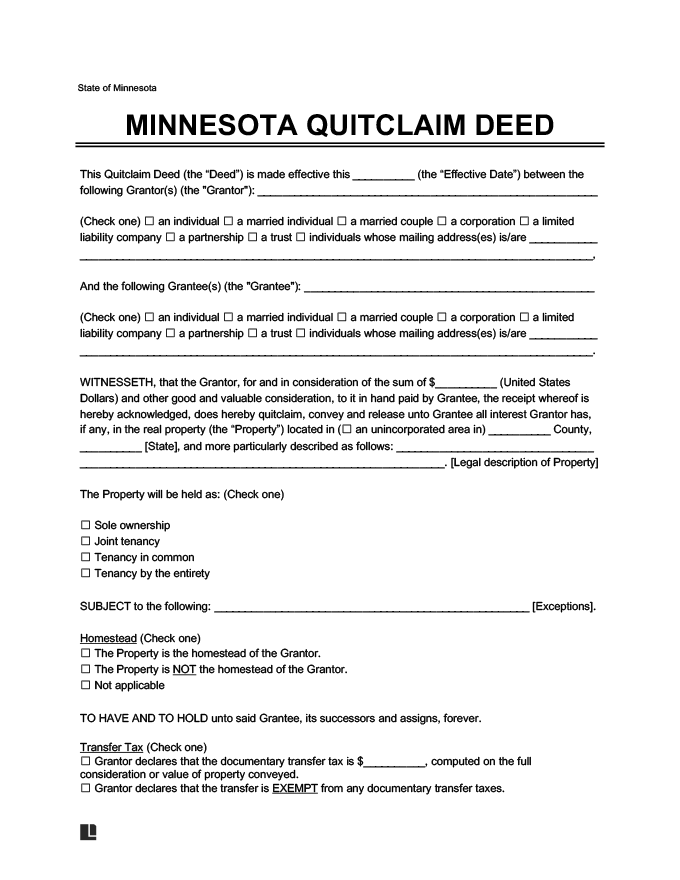Filing a quitclaim deed in Minnesota requires attention to detail. Follow these steps to avoid missing critical information.
Step 1: Locate the Current Property Deed
Obtain a copy of the current owner’s deed for the property being conveyed. You will need the information from this document to proceed, whether you are transferring property or updating an existing deed.
If you cannot obtain a copy from the current owner, contact the county recorder in the county where the property is located to request a copy.
Step 2: Find the Property’s Legal Description
The legal description is a necessary part of the quitclaim deed, according to Minn. Stat. § 507.07. You can typically find it on the face of the existing deed. It may use any of the following methods of measurement:
- Lots and blocks.
- Sectional land descriptions.
- Fractional parcels.
- Metes and bounds.
Transcribe the description into your form exactly how it appears on the current deed.
Step 3: Complete the Quitclaim Form
When drafting your deed, take note of the formatting requirements under Minn. Stat. § 507.093.
State laws do not require a statement of consideration. However, consider including the amount of consideration to ensure appropriate taxation and avoid legal issues.
Step 4: Complete Disclosures
Quitclaimed properties transferred for consideration over $3,000 are assessed a deed tax. You must pay the tax and complete an electronic certificate of value (eCRV) form. The county auditor will then provide an acknowledgment for you to submit with your deed.
Exemptions under Minn. Stat. § 287.22 should be noted on the face of the deed in lieu of the certificate of value acknowledgment.
Minn. Stat. § 103I.235 also requires disclosure of the status and location of wells. For owners unaware of any wells on the property, the following disclosure should be noted on the quitclaim deed: “The Seller certifies that the Seller does not know of any wells on the described real property.”
Step 5: Sign Before a Notary
The document must be signed before a notary public or other officer authorized by Minn. Stat. § 507.24.1. If the grantor is married and conveying homestead property, the grantor’s spouse must also sign the quitclaim deed. The county recorder may accept electronic signatures (Minn. Stat. §§ 507.0941 to 507.0948).
Step 6: File the Deed With the County Recorder’s Office
Register your form with the county recorder’s office in the county where the property is located. Properties that exist in multiple counties must be registered in each county.
At the time of registration, the recorder may charge deed tax, consistent with Minn. Stat. § 287.21. Depending on the county, they may also charge a land preservation fee (Minn. Stat. § 40A.152).
